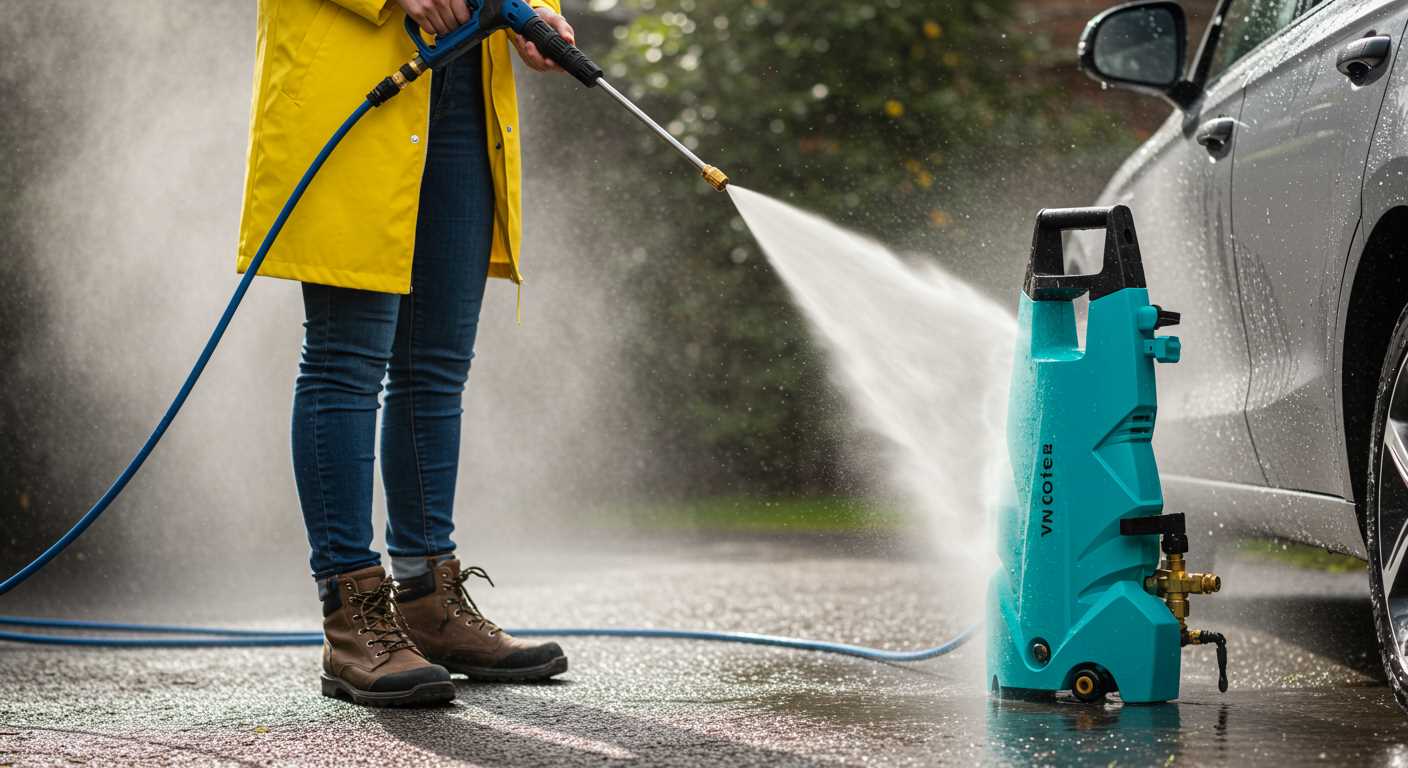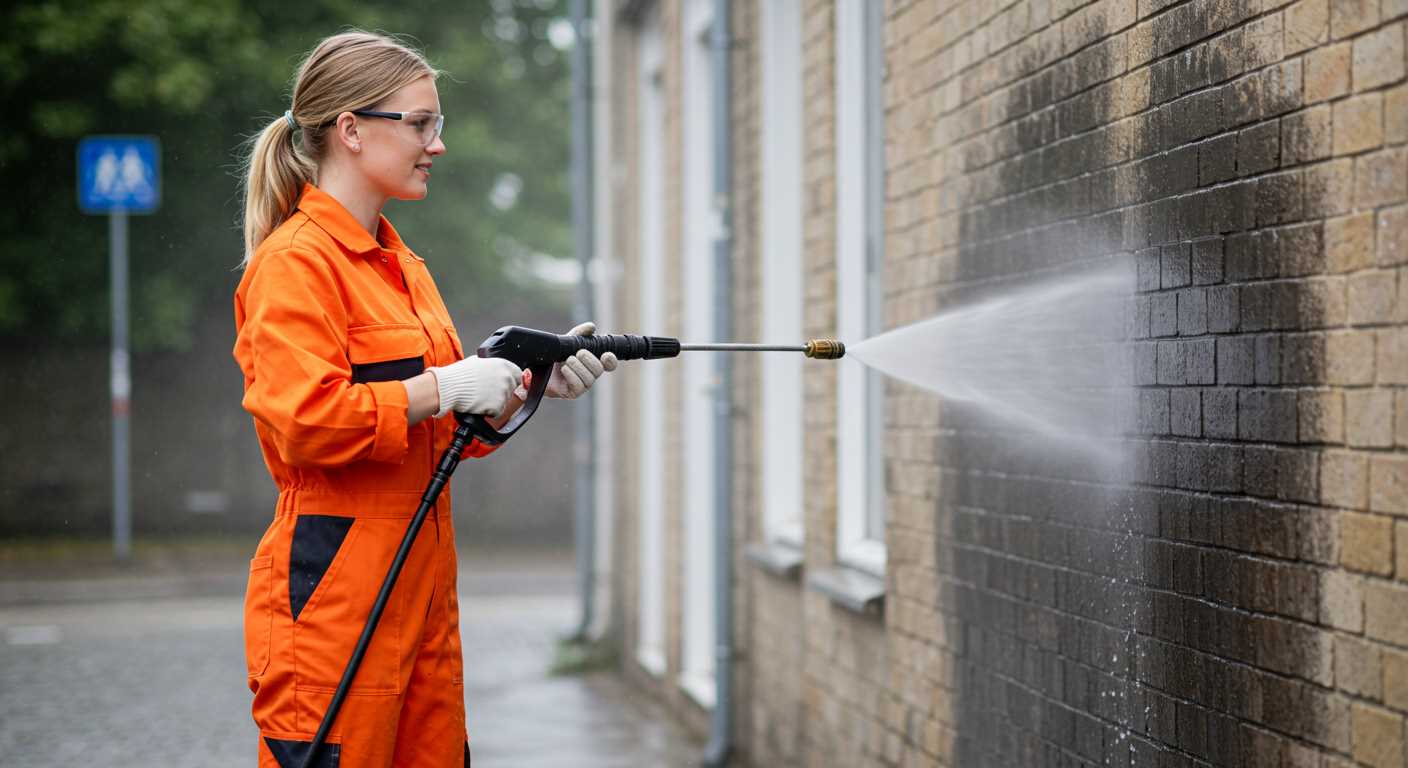



To enhance the performance of your cleaning unit, first, check the water supply as inadequate flow can significantly impact functionality. Ensure that the hose is free of kinks and the inlet filter is clean, allowing for maximum water intake.
Next, inspect the nozzle. A clogged or damaged nozzle can restrict water flow, leading to diminished pressure and ineffective cleaning. Regularly cleaning or replacing the nozzle is crucial for maintaining optimal operation.
Another frequent culprit is the pump itself. Look for leaks or signs of wear, as these can prevent proper pressure generation. If the unit is electric, verify the power supply; a weak connection can result in insufficient performance.
Lastly, consider the detergent used. Not all soap is compatible with every machine. Using the wrong type can not only compromise effectiveness but can also damage internal components. Opt for a detergent specifically designed for your model to ensure peak efficiency.
Common signs of low pressure in cleaning devices
Reduced water output is a clear indicator that something isn’t right. If the stream feels weak or the volume is significantly less than expected, it’s essential to investigate further.
Nozzle Issues
An obstructed or damaged nozzle often leads to diminished force. Regularly inspect the nozzle for blockages like dirt or debris. If the nozzle is broken, replacing it will restore performance.
Inlet Problem
Check the water supply. Insufficient flow from the source can lead to inadequate performance. Ensure there are no kinked hoses and that the water supply is turned on fully. If the inlet filter is clogged, clean or replace it to enhance the flow.
Identifying clogged nozzles and how to clean them
Check the nozzle for any blockages as a top priority. Clogged nozzles are a common issue that can cause a notable drop in performance. Start by removing the nozzle from the lance or hose. It’s often secured with a simple twist or push-release mechanism.
Inspect the nozzle for visible debris or mineral build-up. A magnifying glass can help identify small particles that are not immediately visible. If it appears blocked, prepare a cleaning solution by mixing warm water with a few drops of dish soap. Soak the nozzle in this solution for approximately 15 to 30 minutes to loosen any stubborn deposits.
Next, use a soft-bristle brush or a wooden stick, like a toothpick, to carefully dislodge debris. Avoid metal tools as they can scratch or damage the nozzle. After scrubbing, rinse the nozzle under running water to ensure all residues are removed. A clogged nozzle may also require a deeper clean; for this, vinegar can be an effective alternative to remove mineral deposits.
If the nozzle is still clogged, consider using a compressed air canister to blow out any remaining particles. Hold the nozzle away from you and ensure you wear protective eyewear during this step. Always ensure the nozzle is completely dry and free from any residue before reattaching it to the lance.
| Cleaning Step | Description |
|---|---|
| Remove Nozzle | Detach the nozzle from the lance or hose. |
| Inspect | Look for visible debris or build-up using a magnifying glass. |
| Soak | Use warm water with dish soap to soak for 15-30 minutes. |
| Scrub | Use a soft-bristle brush or wooden stick to remove debris. |
| Rinse | Rinse under running water to wash away residues. |
| Use Compressed Air | If needed, blow out remaining particles using a compressed air canister. |
Reattach the nozzle only when certain it is completely dry. Regular maintenance of nozzles will ensure optimal performance and longevity of your cleaning equipment.
Understanding the role of water supply and hose connections
The efficiency of cleaning equipment relies heavily on the water source and hose connections. Ensure your water supply is adequate; a minimum of 4-5 litres per minute is recommended for optimal operation. Verify that the water tap is fully open to prevent any flow restrictions.
Next, inspect the inlet hose and connections. A damaged or kinked hose can drastically reduce water flow. Check for leaks and ensure that all connections are tight and secure. If the hose is worn out, replacing it can significantly enhance performance.
Testing water supply pressure

Utilise a pressure gauge to measure the water supply’s pressure. Aim for around 40-60 psi. If the reading is too low, you may need to consult with a plumber or consider using a booster pump to elevate the pressure, guaranteeing a constant flow to your equipment.
Connection compatibility
Confirm that your hose fittings are compatible with the water source. Mismatched connectors can cause disruptions in water flow, impacting cleaning results. Use quality fittings that ensure a tight seal to prevent air intake, which can lead to inconsistent performance.
In my experience, paying attention to these factors can vastly improve the performance of your cleaning unit. Regular maintenance and checks of the water supply and hoses will save you time and frustration, allowing you to achieve the best results with minimal hassle.
How to check the pump for damage or wear
Begin by turning off the machine and disconnecting it from the power source. Inspect the pump casing for cracks, dents, or other visible signs of damage. Look closely at the seals and gaskets; wear or deterioration can lead to leaks that affect performance.
Next, remove the pump from the chassis for a more thorough inspection. Check the internal components, such as pistons and springs, for signs of wear. If there are scratches or scoring on any surfaces, this indicates that the integrity of the pump has been compromised.
After disassembling, examine the valves for proper function. If they do not open and close smoothly, replacement may be necessary. It’s also wise to check for any obstructions or debris that could hinder operation.
Listen for unusual noises when the device is in operation; rattling or grinding sounds can indicate internal damage. If the machine vibrates excessively, this can also point to pump issues. Addressing these symptoms early can prevent further damage.
Lastly, consider conducting a flow test. If the output is lower than expected, it may signal wear within the pump mechanism. If any of these issues arise, consulting a professional may be the best course of action to restore functionality.
Examining the Electrical Components for Faults
Inspecting electrical parts is crucial for diagnosing performance issues. Begin by checking the power supply; ensure the outlet is functional by testing it with another device. If there’s no problem with the outlet, examine the extension cord. Look for frays, cuts, or kinks that might indicate a fault, as these can reduce power delivery.
Potential Issues to Consider

- Power Switch: Test the on/off switch for continuity using a multimeter. A malfunctioning switch can prevent the unit from activating.
- Trigger Gun: Check the connection points and the trigger mechanism. A faulty trigger gun can restrict flow and impact overall operation.
- Wiring: Inspect all visible wiring for signs of damage or corrosion. Damaged wiring can lead to power loss and potential hazards. Replace any compromised wires immediately.
Using a multimeter, assess the continuity of internal components like the motor and any circuit boards. If there are breaks or shorts, consider consulting a professional for repairs.
Maintenance Practices
- Regularly clean terminals and connectors to prevent build-up, ensuring a strong connection.
- Store the machine in a dry area to avoid moisture damage to electrical components.
- Follow your manufacturer’s guidelines for inspections and maintenance schedules.
By diligently checking electrical components, I often resolved issues quickly, restoring functionality without extensive repairs. Proper attention to these details enhances longevity and performance.
Impact of the Wrong Detergent on Pressure Output
Using an incorrect cleaning agent directly reduces the effectiveness of your machine. It’s vital to choose a detergent that is specifically designed for your equipment type. Generic or harsh chemicals can create excessive foam or leave residues, preventing optimal water flow through the system.
I recall a client who used a garden store detergent, thinking it would be fine. The result was excessive suds that clogged the nozzle, severely hampering the performance during a critical cleaning task. Always consult your user manual for recommended products.
Additionally, avoid using higher concentration solutions than required. More is not always better; it can interfere with the cleaning process, making it less powerful than intended. Adjusting dilution rates according to the manufacturer’s specifications can greatly enhance effectiveness.
If you encounter reduced output, inspect the detergent used. Switch to a proper formulation and examine any filters if the issue persists. Regular maintenance and using compatible detergents will ensure the longevity and reliability of your equipment, yielding better results.
Lastly, conducting a test with different agents may help identify which one works best for your specific needs, facilitating optimal operation and results while extending the life of the device.
Maintenance Practices to Prevent Pressure Loss
Regular inspection and maintenance are critical in sustaining optimal performance of your equipment. I recommend adhering to the following practices:
1. Regular Cleaning of Components
- Remove dirt and debris from external surfaces and hoses to prevent blockages.
- Detach and clean the filter screens regularly to ensure unobstructed water flow.
- Inspect and clean the inlet strainer; a clean strainer maintains consistent water supply.
2. Optimal Storage Conditions
- Store the unit in a dry, sheltered area to prevent rust and corrosion.
- During prolonged periods of inactivity, drain the water from the system and run it to clear remaining moisture from internal parts.
- Keep hoses untangled and protected from kinking or crushing to prevent wear.
3. Periodic Inspection of Seals and Connections
- Check O-rings and seals for wear or damage; replace them as needed to prevent leaks.
- Ensure all connections are tight and secure to avoid pressure loss through loose fittings.
4. Regular Oil Checks
- For units with oil-filled pumps, check oil levels routinely, topping up as necessary.
- Replace oil according to manufacturer guidelines to ensure proper lubrication.
5. Pump Maintenance

- Monitor the pump for unusual noises or vibrations; these can indicate worn bearings or internal damage.
- Inspect the pump’s internal components if you notice a decrease in output, replacing parts as needed.
Adhering to these maintenance practices significantly reduces the likelihood of losing force during operation, ensuring your unit remains reliable for various cleaning tasks.
FAQ:
What are the common reasons my pressure washer is not providing enough pressure?
There are several reasons your pressure washer might be weak. First, check the water supply. If the water flow is insufficient, the pressure will be low. Additionally, a clogged nozzle can restrict water flow, leading to weak performance. Inspect hoses for kinks or damages that can hinder water flow. Finally, ensure that the pump is functioning properly; worn or damaged internal parts could also be the cause of low pressure.
How can I tell if the nozzle of my pressure washer needs cleaning or replacing?
To determine if your nozzle requires cleaning or replacement, inspect the nozzle for visible blockages, such as dirt or debris. You can perform a simple test by removing the nozzle and running the washer without it. If the pressure improves significantly, the nozzle is likely clogged. If cleaning the nozzle does not resolve the issue, or if the spray pattern is inconsistent or damaged, it may be time to replace it. A worn nozzle can negatively affect performance and efficiency.
Can low water temperature affect my pressure washer’s performance?
Yes, low water temperature can impact the performance of a pressure washer. If the water is too cold, it may not effectively remove grime and dirt, especially if you’re using detergents that are designed to work with warmer water. Most pressure washers operate best with water temperatures above a certain threshold. If you notice weak cleaning power, consider using mildly warm water if your unit allows it, or ensure the detergent you’re using is suitable for cold water applications.
What maintenance steps should I take to prevent a decrease in pressure over time?
Regular maintenance is key to ensuring your pressure washer operates at optimal levels. Start by checking and cleaning the air filter and spark plug (for gas models) periodically. Inspect the hoses for any signs of wear, and replace them if necessary. Make sure to regularly clean the spray nozzle and check the detergent tank for clogs. Additionally, ensure the pump is lubricated as recommended in the manufacturer’s manual. Following these steps will help maintain pressure and extend the life of your equipment.







